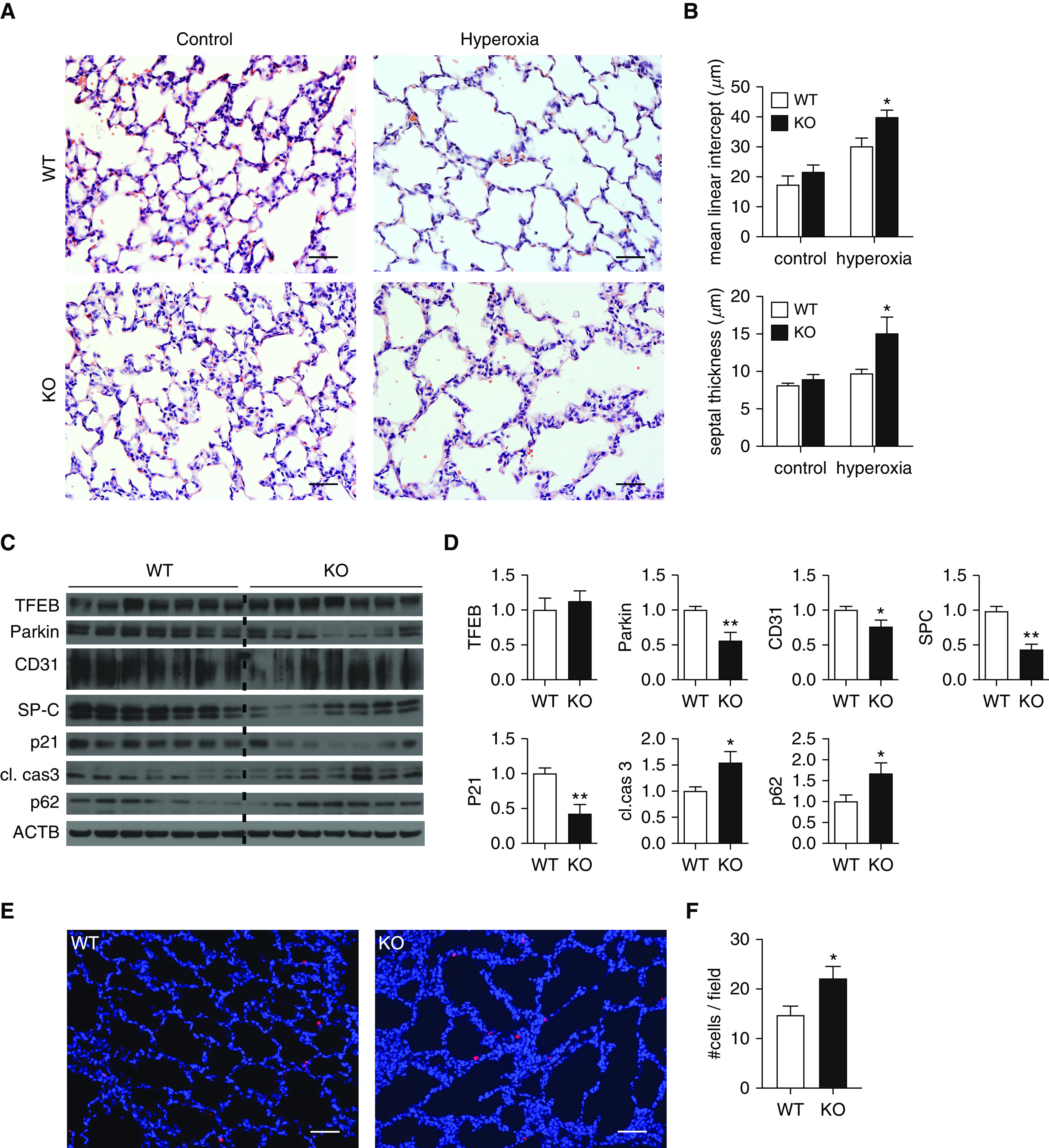Figure 5.

Becn1+/− mice are more susceptible to neonatal hyperoxia-induced lung injury. Becn1+/− (knockout [KO]) and wild-type (WT) littermate control mice (both on C57BL/6 background) were exposed to normoxia (21% O2) or hyperoxia (75% O2) between P1 and P7. At P7, mice were killed, and their lungs were inflation fixed with 10% formalin to 25 cm H2O and embedded in paraffin. (A) Sections were stained with hematoxylin and eosin. (B) Mean linear intercept as a surrogate for alveolar diameter and alveolar septal thickness were quantified using ImageJ and NIS-Elements Basic Research (Nikon Instruments) software, respectively. (C and D) In other cohorts of mice, left lungs were snap frozen, homogenized in radioimmunoprecipitation assay buffer containing protease inhibitors, and analyzed by IB (C) and densitometry (D) for the indicated proteins. (E and F) A TUNEL assay was performed on paraffin-embedded mouse lung tissues (E), and TUNEL-positive cells were quantified (F). Data were obtained from a minimum of three separate litters and are shown as mean ± SEM; n = 7–10 per group. *P < 0.05 and **P < 0.01. Scale bars, 50 μm.
